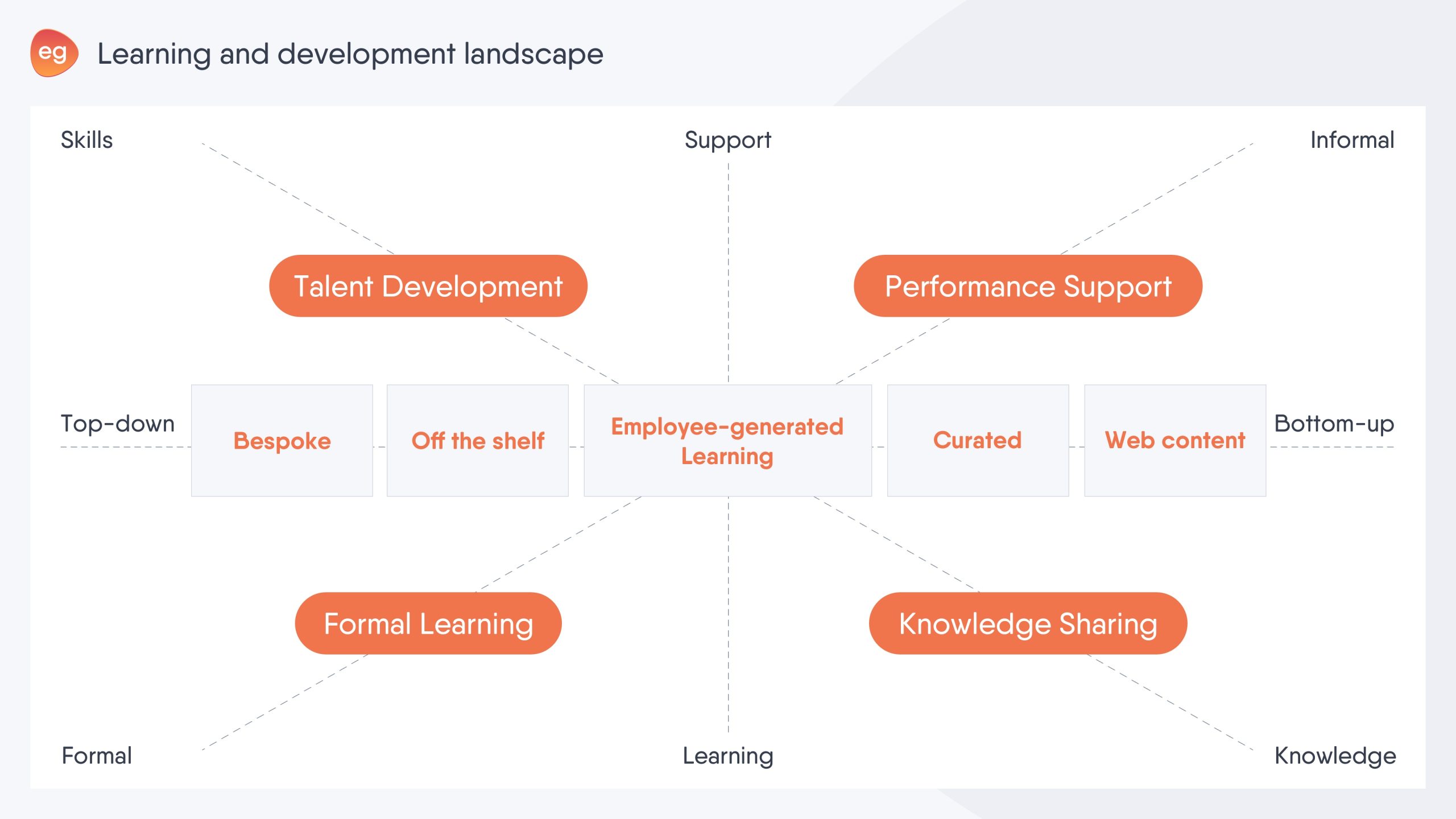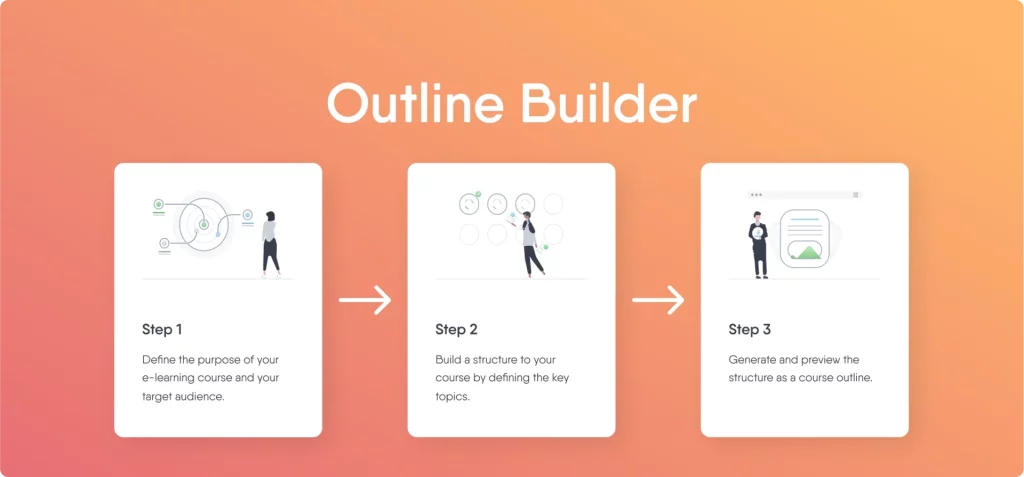The 4 tectonic shifts in L&D: content creation
In part 1 and part 2 of this series on the tectonic shifts in learning and development (L&D), we looked into several of the major trends in corporate learning, as well as their impact on some of the main learning tools.
In this third and final article, we’ll consider how the creation of e-learning content itself has also been subject to dramatic change.
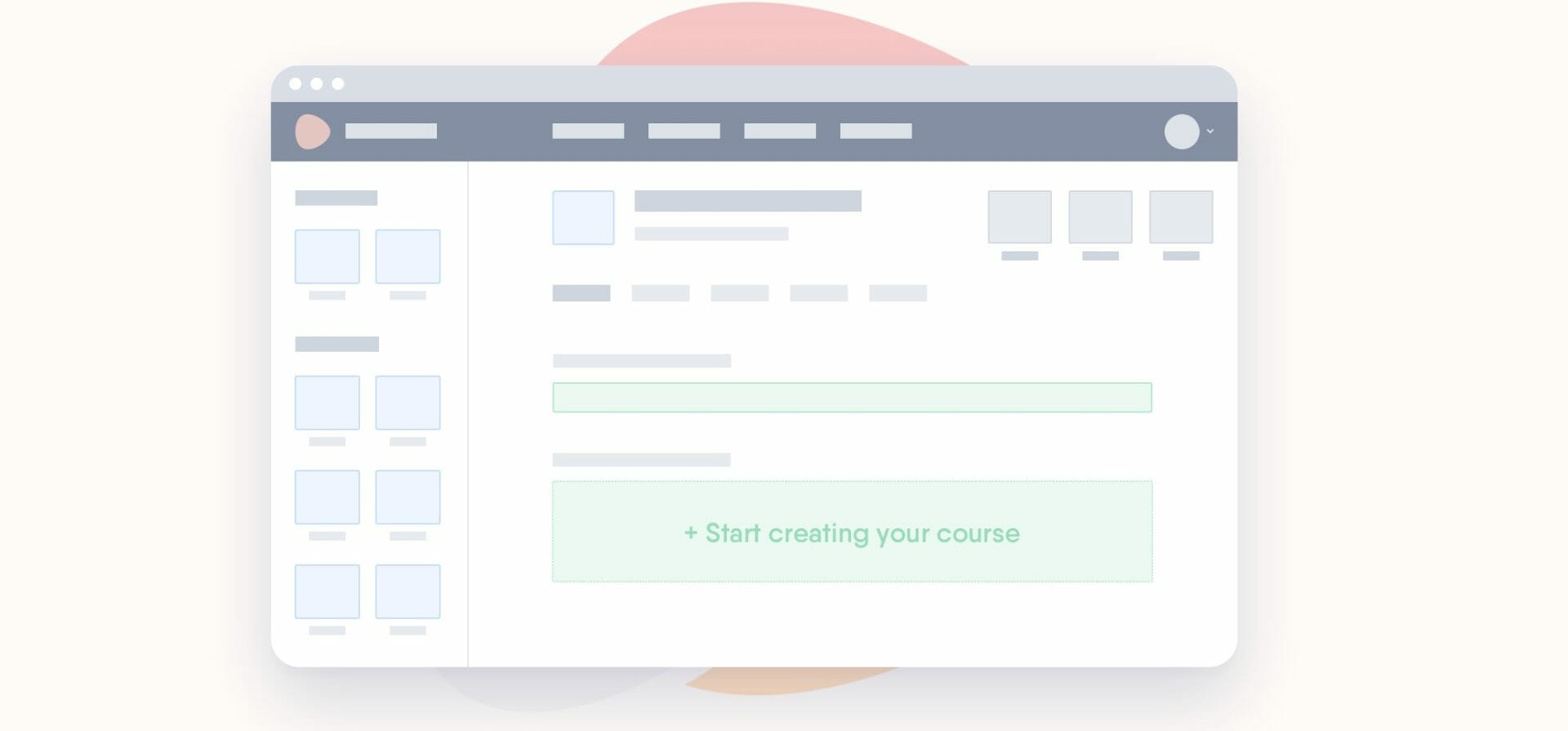
Five moments of learning
In part 1, we looked at the four major transitions taking place in L&D, including:
- From formal learning towards informal learning
- From a top-down approach towards a bottom-up approach
- From a learning approach towards performance support
- From a knowledge focus towards a skills focus
We also touched on Bob Mosher and Conrad Gottfredson’s five moments of learning:
- Learning something for the first time (New)
- Learning more about a particular topic (More)
- When things change (Change)
- Applying what you’ve learned (Apply)
- When things go wrong (Solve)
Each moment creates several specific learning needs for an employee.
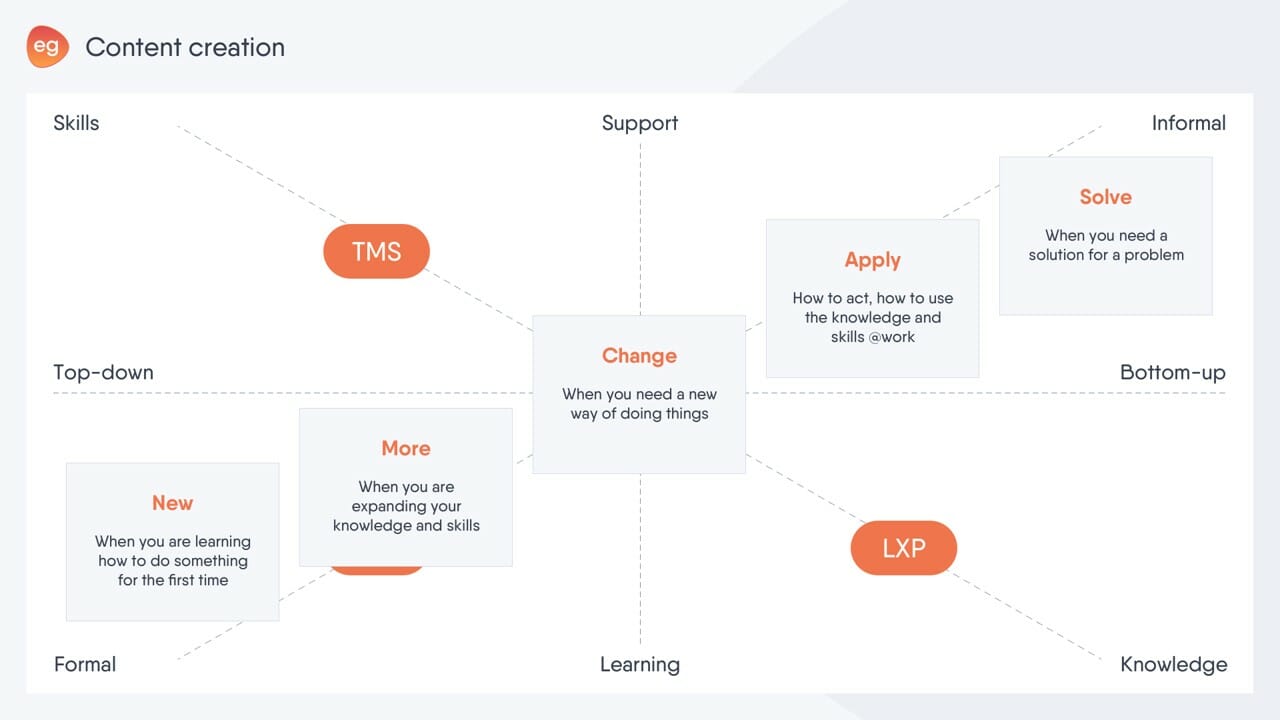
Based on current trends in L&D, we can see that although there’s less demand for content creation in the ‘New’ and ‘More’ categories of learning, the need for content in the ‘Change’, ‘Apply’ and ‘Solve’ categories is on the increase.
This is in line with the shift to knowledge sharing and performance support we discussed in Part 1.
The majority of learning content should be informal. L&D teams should move their approach from courses to workplace resources instead. In this article, we’ll look at lessons learned from formal content creation and then see how these lessons apply to informal content and workplace resources.
Problems with formal content development
Most formal e-learning courses are created by instructional designers. Although these are specialists in e-learning, they’re often not experts on the particular topic they’re creating content for.
So, designers often need to go back and forth between experts (often employees) to make sure all content is accurate.
There are serious downsides to this approach:
- Instructional designers (especially third-party ones) are expensive. It can cost anything between $9,000-$30,000 to create just one hour of learning content.
- It’s time-consuming and resource-heavy. It usually takes between 90 to 240 hours to create just one hour of e-learning.
- Content is often out-of-date by the time it’s published, or soon after.
- It’s expensive to keep up-to-date.
Employee-generated Learning offers a useful alternative. It turns the content creation process on its head by allowing employees to share their expertise. This allows them to take responsibility for creating their own training. By putting workers with the most relevant expertise in charge of building and maintaining e-learning, you remove all those earlier downsides.
Employee-generated Learning is hugely empowering. It recognizes that your employees already have all the necessary expertise. It also acknowledges that employees understand your core business better than L&D.
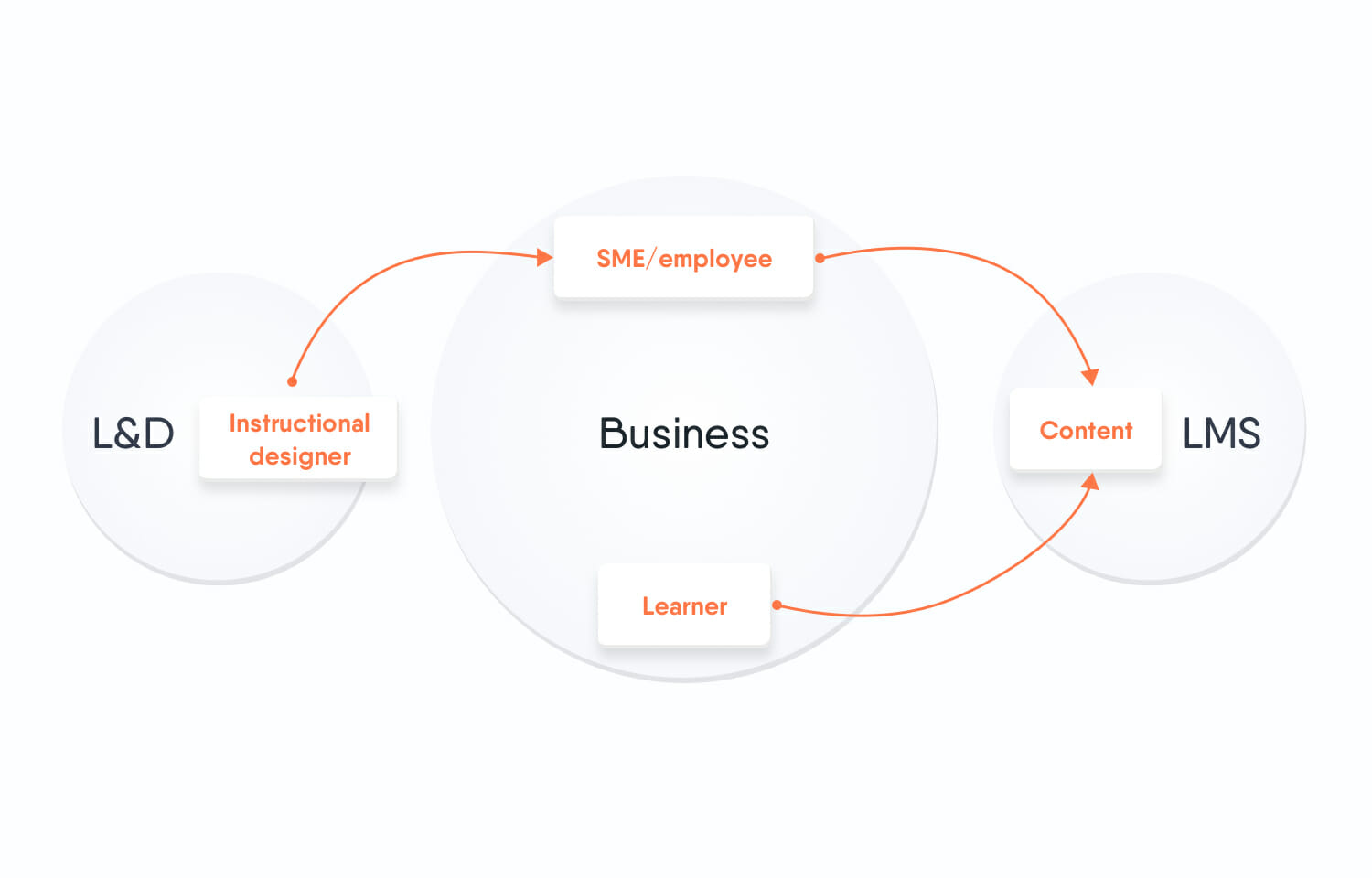
Informal and performance support content
The Employee-generated Learning approach is already working for many companies. It solves the learning needs for New and More. But Change, Solve and Apply don’t need courses, they need resources.
The same problem as with formal training occurs here. Relying on instructional designers to create this content will be too slow, too expensive and above all, it will be impossible to keep up-to-date. The speed of business is ever-increasing and these performance resources are affected by change even more than formal learning content.
Bob Mosher (one of the men behind the five moments of learning need) recommends that at least 80% of all content should come from these employees or Business Matter Experts as he calls them. It’s the only way to create these resources and keep them up-to-date. This will be mainly for Change, Apply and Solve. The content will not be in the form of a course but in the form of performance support content, we call this Employee-generated Resources.
Different ways to create or get content
By adding Employee-generated Learning/Resources to the mix, you now have five methods for creating or curating content:
- Bespoke e-learning creation: content created by an instructional designer interviewing employees.
- Off-the-shelf content: ready-made materials bought from a content marketplace or a supplier – for example, Linda.com or Open Sesame.
- Employee-generated Learning or resources: content created and maintained by your employees.
- Curated content: a selection of existing content (internal or external) organized in such a way that others can access it.
- Web content: articles, videos, images, documents, Moocs, blogs, podcasts, and more.
Easygenerator
The trend from courses to resources will have a big impact on Easygenerator. We are already researching how we can facilitate SMEs/BMEs to create performance support resources that align with the 5 moments. We expect that the first changes in that direction will be visible in our product at the beginning of 2020. Easygenerator is committed to facilitating not only Employee-generated Learning but also Employee-generated Resources.
Conclusion
There are several huge shifts taking place in the world of L&D. Both the learning content required, and how that content is then sourced and delivered.
Until recently, most learning activities were owned by the L&D department and took place in the formal quadrant. They consisted of face-to-face training and courses managed through an LMS.
Although this is still a valid approach for some organizational learning, there’s been a shift towards the use of LXPs. These allow learners to search and find information whenever they need it.
The downside is that LXPs are difficult to integrate into the workflow, which makes them merely a second-best solution. With a further shift taking place from a learning approach towards greater workplace support.
This will have a big impact on the kind of content that is created (the move from courses to resources). It will also have a big impact on the creation and maintenance of content (the move from bespoke towards Employee-generated content). At Easygenerator we love change and we are already looking forward to extending the reach of our product and the effect it will have on companies and their workplace.
